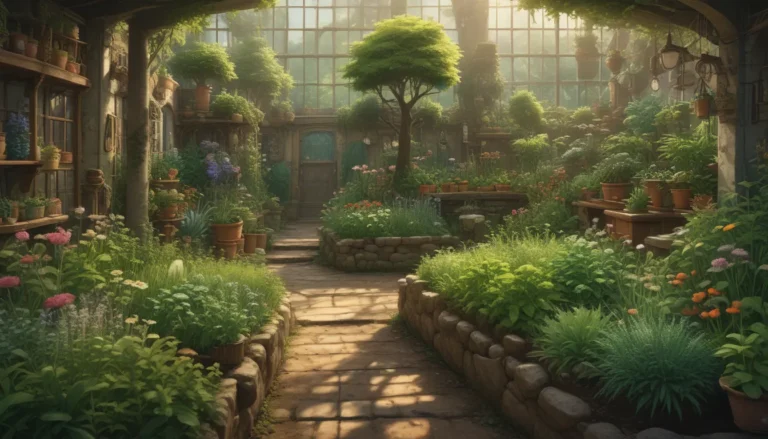How to Successfully Grow Broccoli in Containers

Broccoli is a versatile vegetable that can be enjoyed in a variety of dishes. Whether you prefer it raw, steamed, sautéed, or roasted, growing your own broccoli ensures a fresh and crisp supply for your meals. If you’re short on garden space, fear not! Growing broccoli in containers is a convenient and space-saving solution. In this in-depth guide, we will cover everything you need to know about successfully growing broccoli in containers, from selecting the right cultivars to managing pests and disease.
Getting Started
Broccoli, a member of the Brassicaceae family, has been cultivated for centuries and is known for its health benefits and delicious flavor. When you harvest a broccoli head, you’re actually enjoying unopened flowers. Other popular vegetables in the brassica family include cauliflower, cabbage, and kale. Growing broccoli in containers allows you to enjoy a bountiful harvest even in small spaces.
Why Grow Broccoli in Containers?
Growing broccoli in containers offers several advantages:
- Saves space in small yards or apartments.
- Extends the growing season by providing more control over the environment.
- Allows for a more efficient use of nutrients and water.
- Enables you to grow multiple plants in a confined space.
Choosing the Right Container
Selecting the right container is crucial for successful broccoli cultivation. Here are some tips to keep in mind:
- Opt for a light-colored pot to prevent soil overheating.
- Ensure the container is at least 12 inches deep to accommodate root growth.
- Use well-draining soil amended with compost or fertilizer.
- Check for drainage holes at the bottom to prevent waterlogging.
- Consider the number of plants per pot based on available space.
Preparing Your Container
Before planting, fill your container with a suitable potting mix and fertilizer. Ensure the soil is loose, well-draining, and has a pH between 6.0 and 7.0. Avoid using soil previously planted with brassicas to prevent diseases.
How to Grow
Growing broccoli requires cool weather and a sunny location. For best results, plant broccoli in containers during the spring or fall. You can start seeds indoors or directly in containers, depending on your climate. Be sure to provide adequate water, sunlight, and nutrients for healthy growth.
Sowing Seeds
Broccoli seeds should be planted in a quality potting mix either in trays or directly in containers. Keep the soil moist, and provide ample sunlight for germination. Transplant seedlings when they have 2-3 sets of true leaves and are 4-6 inches tall.
Transplanting
When transplanting seedlings, choose a container size based on the number of plants and desired spacing. Ensure the soil is well-draining and fertilize monthly to provide necessary nutrients. Harden off seedlings before moving them outdoors for optimal growth.
Container Care
Once your broccoli plants are established in containers, proper care is essential. Ensure they receive sufficient water, sunlight, and nutrients. Monitor soil moisture levels and fertilize regularly to maintain healthy growth. Mulch with straw to keep roots cool and moist, especially in warmer climates.
Growing Tips
- Start seeds indoors 8 weeks before the last frost date.
- Provide 1-1.5 inches of water weekly.
- Fertilize monthly with a balanced fertilizer.
- Mulch with straw to retain moisture and keep roots cool.
Cultivars to Select
When growing broccoli in containers, choose compact and fast-maturing cultivars for best results. Consider the following options:
Di Cicco
- An heirloom cultivar that forms heads quickly and produces side shoots.
- Harvest the main head when 3-4 inches wide.
- Ideal for roasted broccoli dishes and soups.
Royal Tenderette Hybrid
- A sprouting variety that produces multiple stalks with florets.
- Fast-growing and suitable for multiple harvests.
- Perfect for quick and easy side dishes.
Managing Pests and Disease
Broccoli plants can be susceptible to pests and diseases, but container cultivation allows for closer monitoring. Keep an eye out for common pests like cabbage loopers and aphids. Apply natural remedies like diatomaceous earth or neem oil to control pests. Prevent soil-borne diseases by using quality potting soil and maintaining proper watering practices.
Harvesting
Harvest broccoli heads when they reach 3-5 inches in diameter with tight buds. Use sharp shears or a knife to cut the stem and encourage side shoot production. Avoid letting buds turn into flowers and continue harvesting side shoots for a prolonged harvest. Broccoli flowers can also be consumed and added to salads for a mild and sweet flavor.
Recipes and Cooking Ideas
Broccoli can be incorporated into a variety of dishes, from roasted sides to creamy soups. Explore different recipes and cooking methods to enjoy this nutrient-rich vegetable. Visit our sister site, Foodal, for more delicious broccoli recipes and cooking inspiration.
Brassica Bliss
Growing broccoli in containers is a rewarding experience that allows you to enjoy fresh produce in even the smallest of spaces. Share your container gardening adventures and favorite broccoli recipes in the comments below. For additional information on growing broccoli at home, check out our related articles.
With the right container, care, and cultivars, you can successfully grow broccoli in containers and enjoy a bountiful harvest of this versatile vegetable. Happy gardening!





